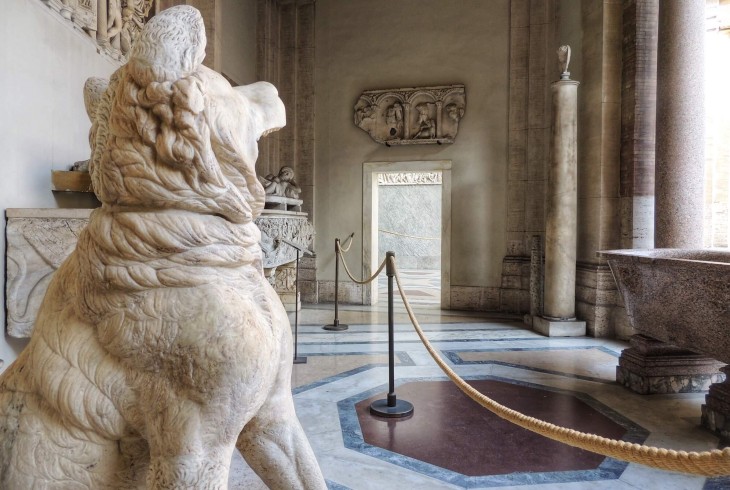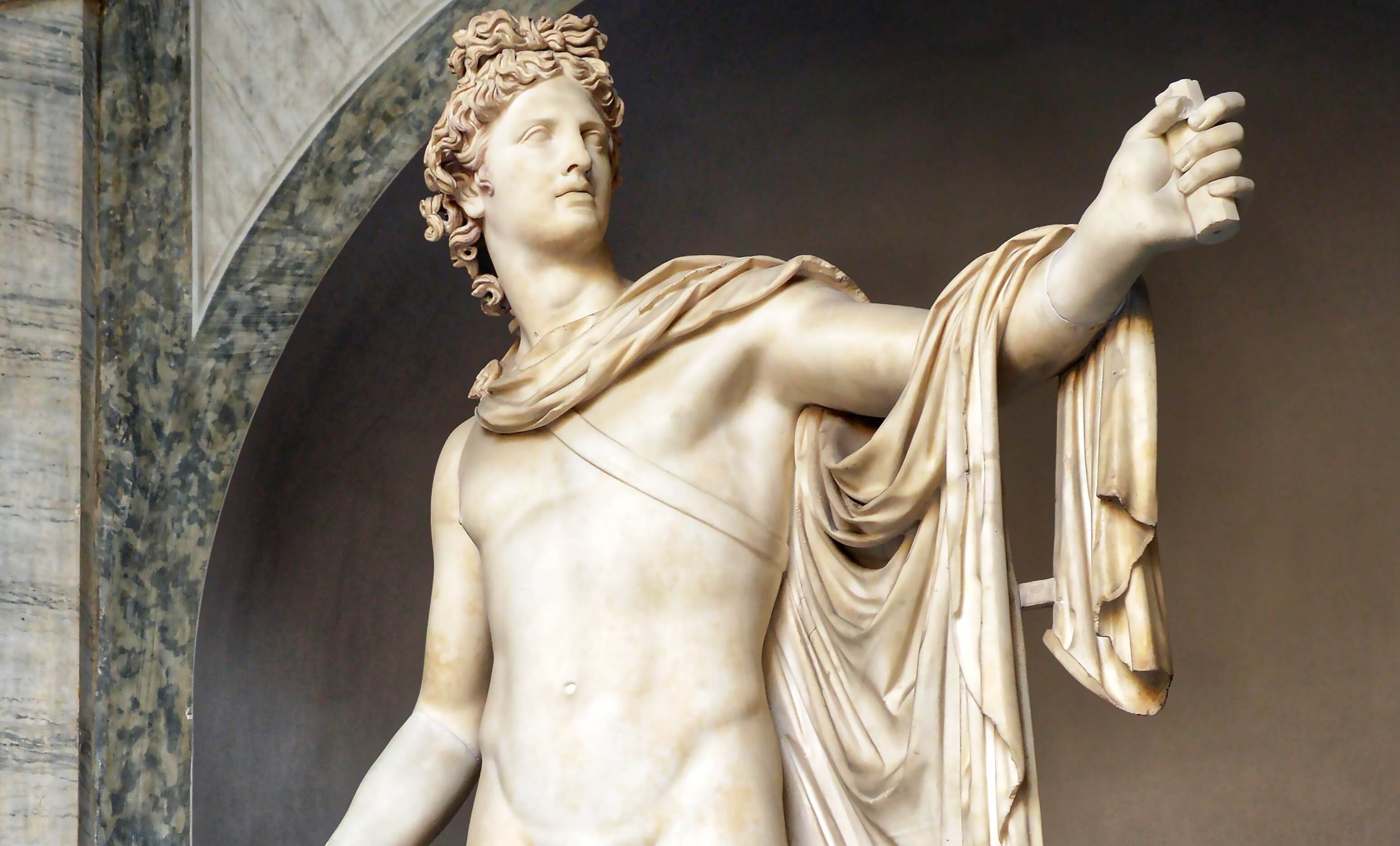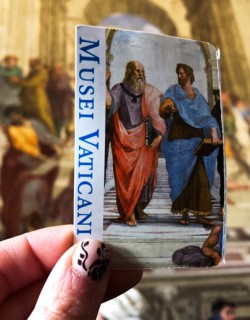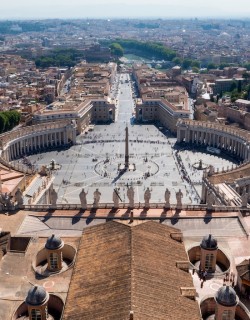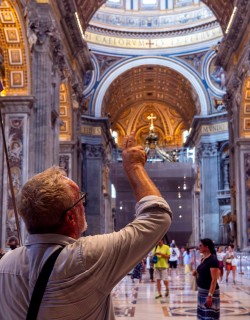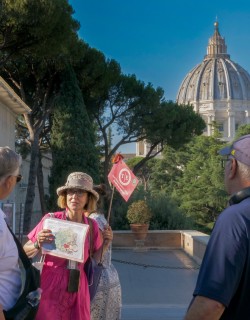Despite being the home of the Pope and headquarters of the Catholic world for nearly 2,000 years, there’s a lot more to the Vatican than Christian art. Despite their self-appointed status as defenders of the faith and scourges of paganism and heresy, many Renaissance popes were also avid collectors of classical sculptures, and the most refined patrons of art of their generation.
The ancient marbles that line the halls and fill the courtyards of the Vatican Museums today had a massive influence on the developing ideals of naturalism and proportion that came to define one of the great golden ages of art, and painters, sculptors and connoisseurs flocked to see the magnificent exemplars of classical aesthetics in the peerless Papal collections first founded by Pope Julius II in the first decade of the 1500s. This week on our blog we’re taking a look at five of the finest ancient sculptures in the Vatican Museums.
The Laocoon
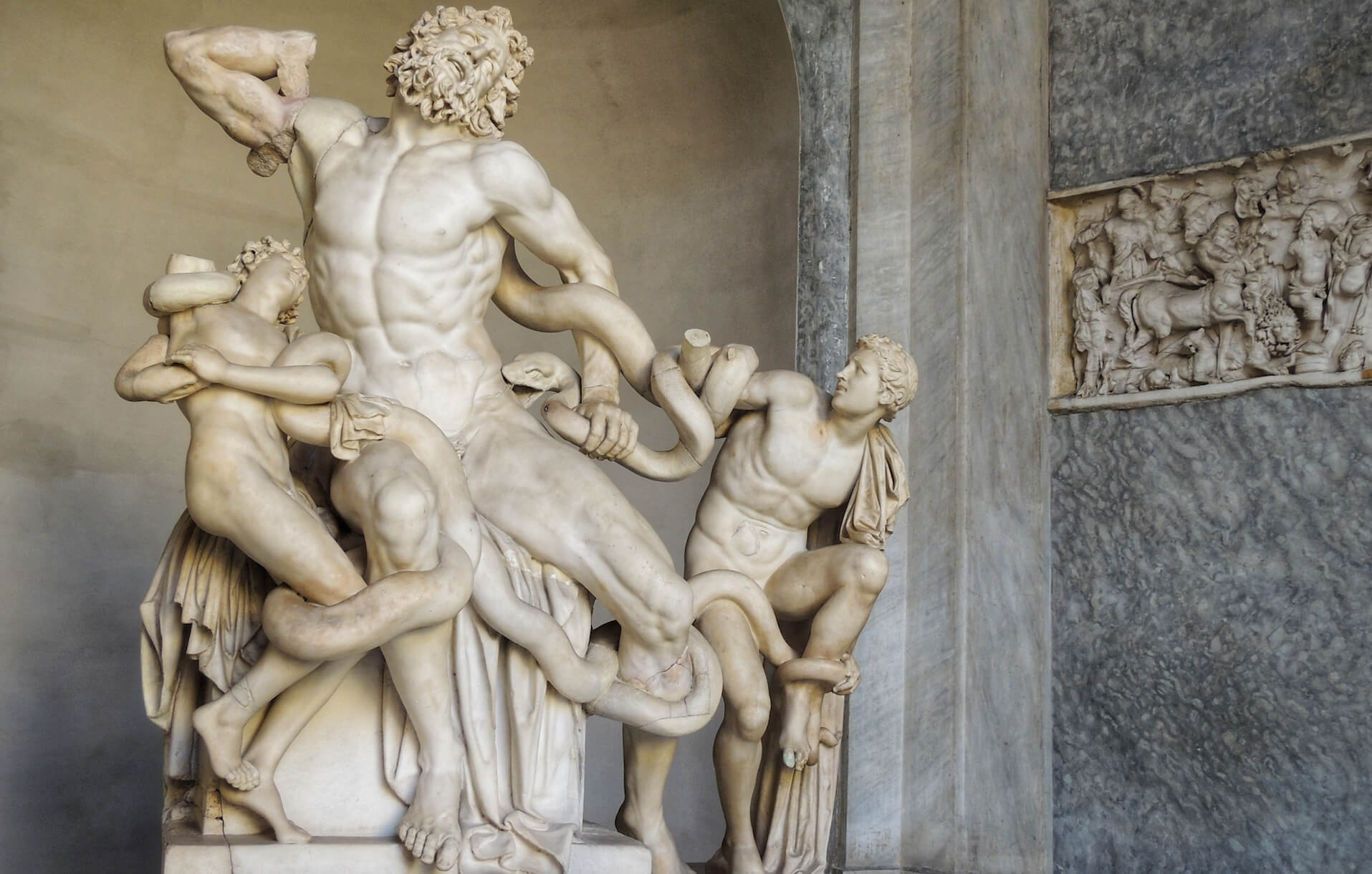
‘I fear Greeks, even those bearing gifts…’
You probably know the story. Helen, by popular acclaim the most beautiful woman in the world, has been carried off from her native Sparta to the city of Troy by the love-struck Paris. The Greeks, fired by fantasies of revenge, set off in hot pursuit, and hatch a cunning plan to breach their enemy’s city fortress. Offering the Trojans a massive wooden horse as a spurious peace-offering, a crack unit of elite Greek warriors are in fact hidden inside the hollow structure as it is wheeled into the city.
Achilles and the gang sprang out of the horse in the dead of night, stealing a march on the city’s defenders and finally gaining the crucial upper hand in the Trojan war. But what of the Trojan priest Laocoon, who had suspicions about the supposed gift in the first place?
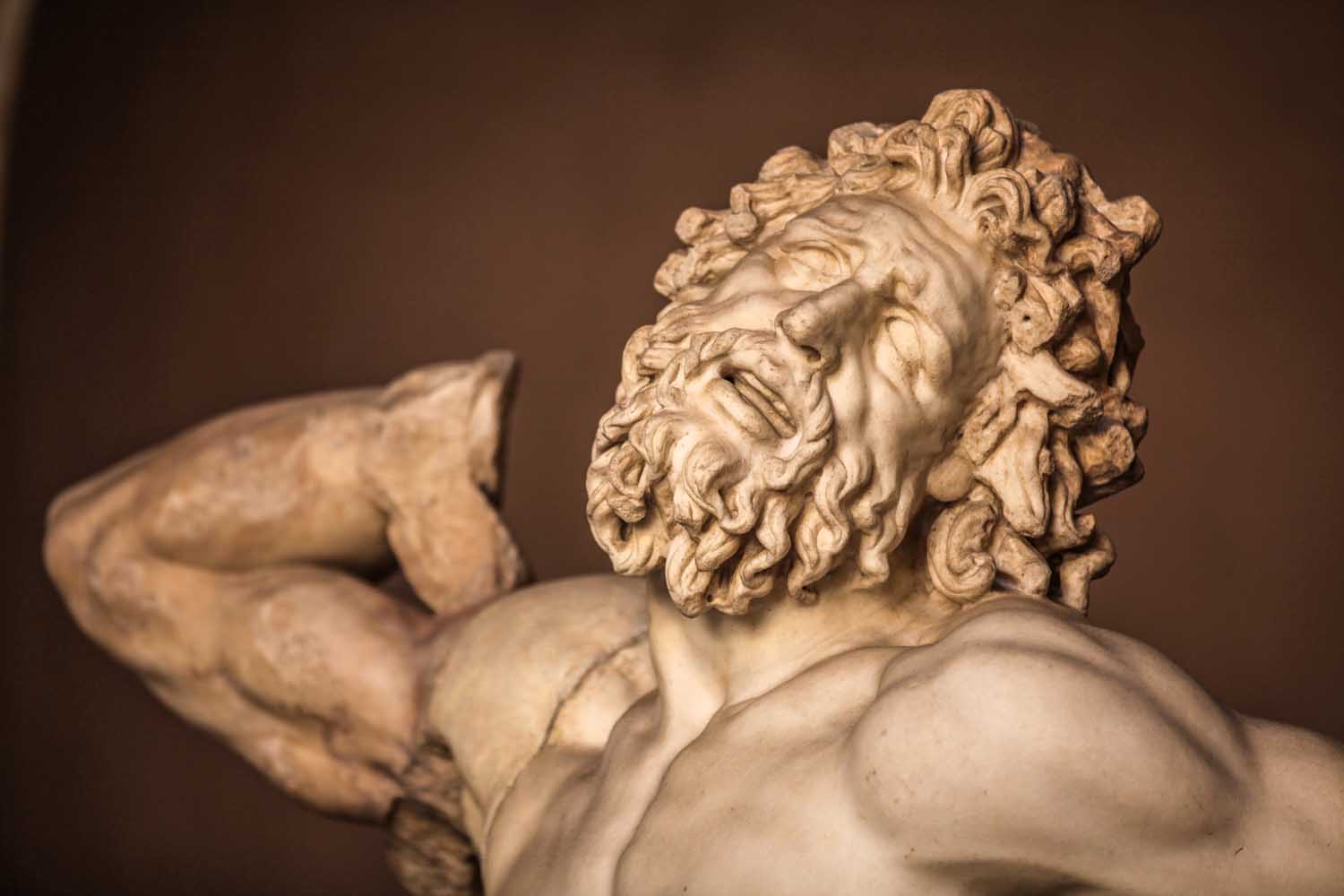
The gods, unfortunately, were not on his side. Lending a hand to the Greek cause, the divine denizens of Mount Olympus rained down sea snakes on Laocoon and his sons before they had the chance to sound the alarm. This incredible Hellenistic statue takes up the story at its most dramatic moment - the writhing serpents twist and tighten around the muscular priest, whose head is thrown back in a howl of agony as the snakes tear flesh from his body. Resistance is futile against the will of the gods; the jig is up, and Troy will fall.
This masterpiece of psychological intensity was widely admired in antiquity, and when it was rediscovered buried in a muddy Roman vineyard at the start of the 16th century it caused a sensation. Artists flocked to admire it, poets penned odes to its beauty, and Pope Julius II soon determined to make it his own. After having it carted off to the Vatican the pontiff installed the statue in his personal sculpture garden, which would morph into the centrepiece of the museums we know today.
Where to find it: The Octagonal Courtyard
The Belvedere Torso
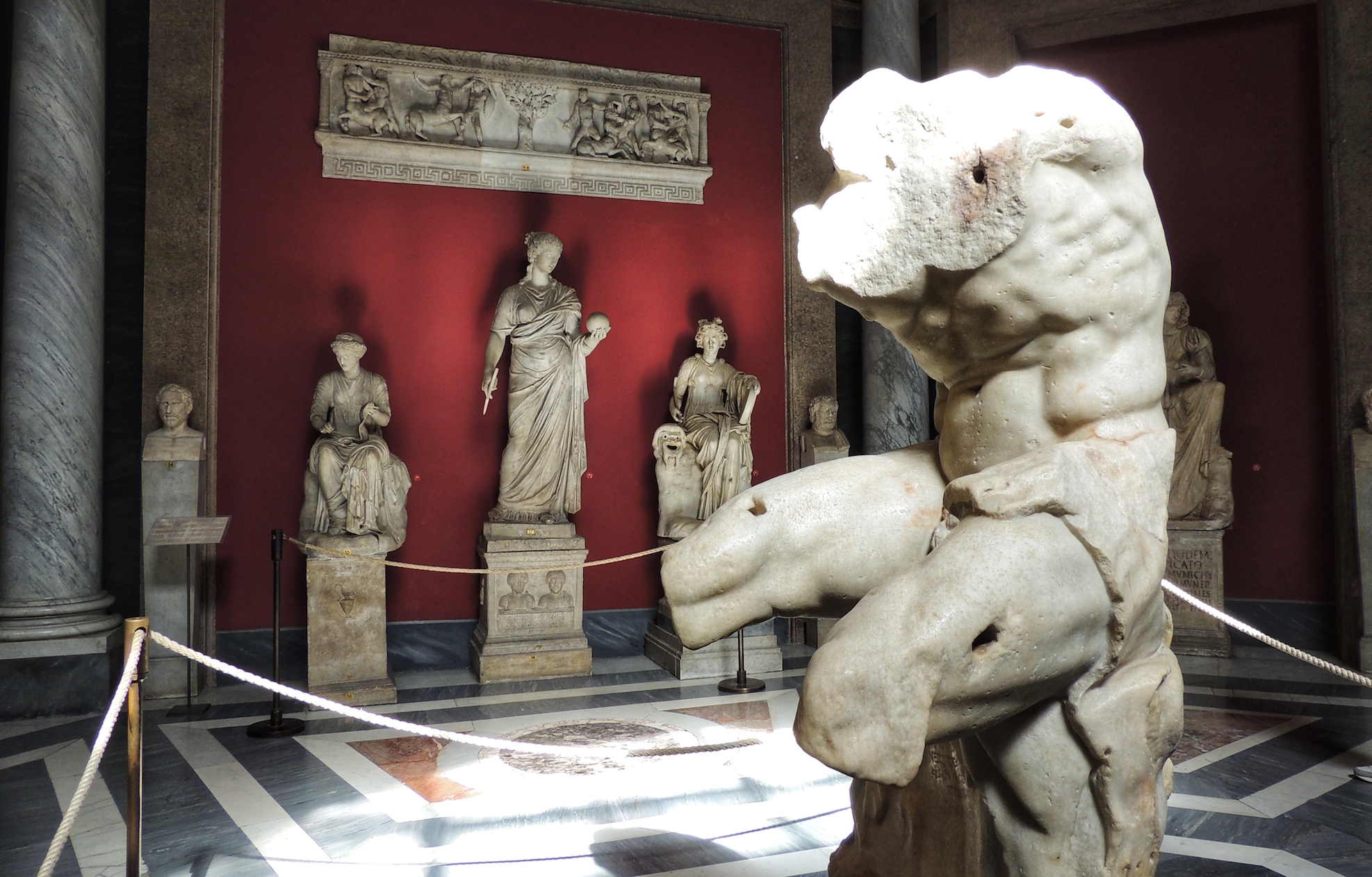
Admired by Renaissance artists for its amazing musculature and twisting form, this powerful and much fragmented ancient torso cast an outsized influence on the development of aesthetic ideals in the 16th century. In the battered and time-worn marble, contemporaries saw the perfection of classical art that their own generation was striving to match.
For such an important work, however, little is really known of its provenance. In 1433 the Torso appeared in an inventory of the antiquarian collection of Cardinal Prospero Colonna, where it remained for the remainder of the century. Pope acquired it in the 1530s, and it wasn’t long before it took its place alongside the Laocoon and Apollo Belvedere as highlights of the nascent Vatican collection.
Michelangelo was arguably the sculpture’s biggest fan, waxing lyrically about its anatomical perfection and using it as a model for much of his own output in both paint and stone. According to legend, Pope Julius II asked Michelangelo to restore the damaged torso; the sculptor was having none of it, arguing that the fragmented stone was perfect as it was. Michelangelo would go on to use the statue as his inspiration for many of the muscular figures in the Sistine Chapel, and today the Belvedere Torso occupies a prominent place in the Vatican Museums’ Hall of Muses - just steps from the Sistine Chapel where Michelangelo derived profound meaning from the venerable torso’s chiselled muscles.
But what does the Belvedere Torso actually represent, and who carved it? The latter question is easy enough to answer, for an inscription chiselled into the base reads ‘Apollonios, son of Nestor, Athenian.’ The only problem is that Apollonius is otherwise unknown to history. As for the subject matter, the traditional identification is with Hercules thanks to the animal hide on which he sits - Hercules famously slew the Nemean lion as one of his Twelve Labours.
Modern scholarship tends to instead favour an identification with the Greek hero Ajax, who committed suicide in a fit of pique after a council of war awarded the stricken Achilles’ magical armour to Odysseus instead of him at the conclusion of the Trojan war.
Where to find it: The Hall of Muses
The Apollo Belvedere
The greatest of the Roman gods, Apollo is something of an enigma. As the patron deity of poetry and music he embodies the extraordinarily refined cultural world of ancient Rome, but Apollo also had a darker side: beautiful and vain, the god was frequently capable of immense cruelty, sending devastating plagues on the tips of his arrows, flaying alive anyone daring to question his musical pre-eminence, and plenty more besides. Apollo, in other words, perfectly captures the paradoxical mix of beauty and cruelty that is one of the defining features of ancient Rome.
One of the most celebrated sculptures in the western tradition and for centuries regarded as the unrivalled apogee of antique art, the Vatican’s Apollo Belvedere depicts the god as an archer, apparently captured in the moment after just firing off an arrow with typical grace (he originally held a bow). After being rediscovered in the late 1400s the sculpture quickly gained renown, and artists as illustrious as Durer and Michelangelo (who used it as the basis for his figure of Christ in the Sistine Chapel) sketched and studied it. Nude apart from his open, flowing robe and elegant sandals, Apollo’s flawless form and delicate musculature was considered to be the supreme embodiment of bodily perfection during the Renaissance.
By the 18th century it was the most famous sculpture in the world, and visitors flocked to the Vatican to admire it. Napoleon admired the Apollo so much that he looted it from Rome to bring back to the Louvre in Paris, only to be returned in 1815 after the despot was deposed. Time began to catch up with Apollo, though, and in the nineteenth century the reputation of the statue began to decline. Many felt that the somewhat bloodless god failed to live up to all the hype. The critic William Hazlitt called it “perfectly bad”, while John Ruskin, initially enthusiastic, soon grew bored of it, declaring the statue “unspiritual.” There’s no accounting for taste!
Where to find it: The Octagonal Courtyard
Perseus with the Head of Medusa
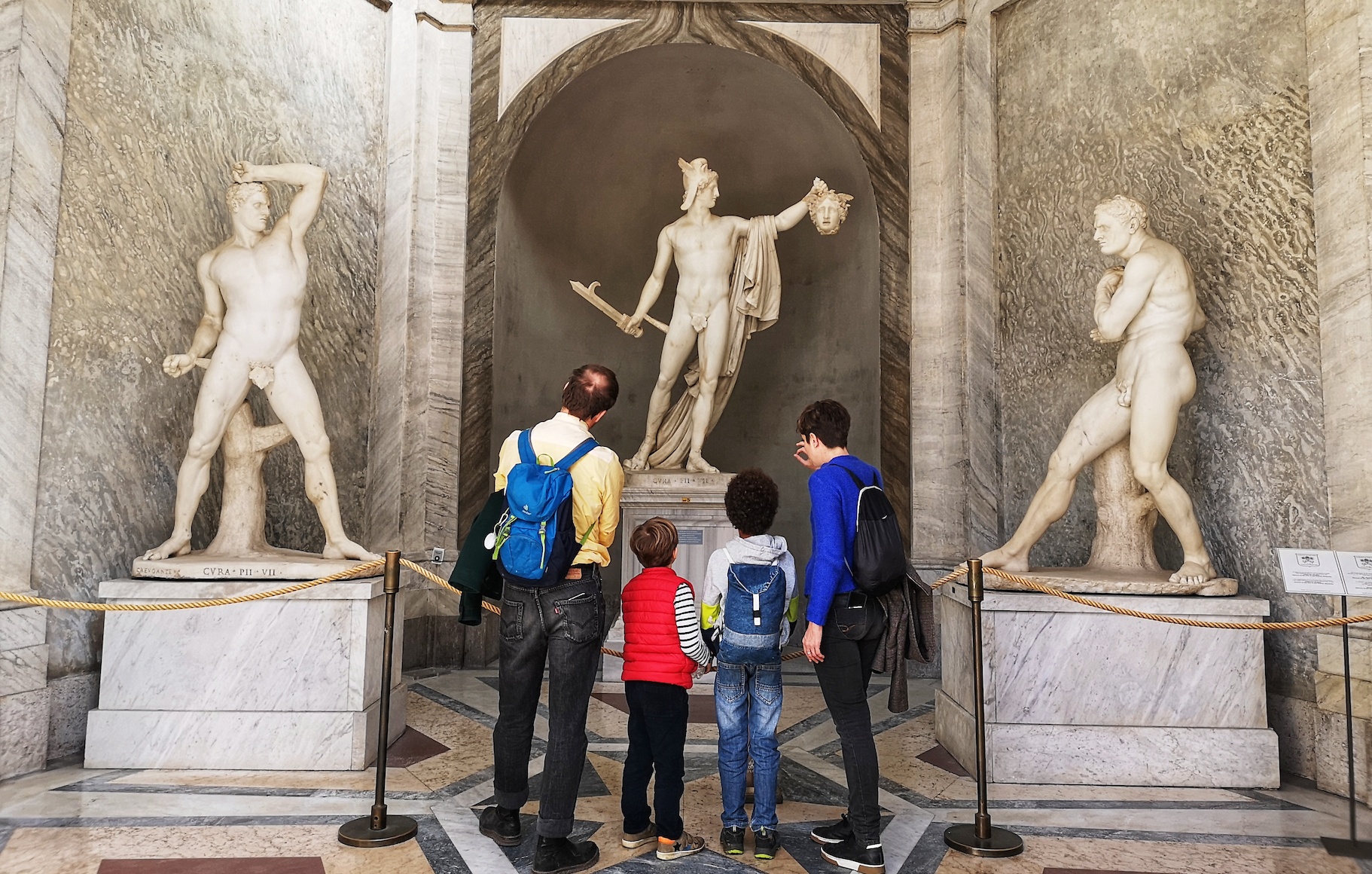
Instantly recognisable thanks to her hair composed of writhing serpents, the fearsome Gorgon Medusa possessed the petrifying power to turn anyone who gazed upon her visage to stone. Tasked by the uncompromising King Polydectes to bring him the seemingly impossible gift of Medusa’s head, the Greek hero-at-large Perseus succeeded in slaying the blood-curdling hybrid by deflecting her deadly gaze away from his own using a polished shield given to him by the goddess Athena. Thereafter Perseus would use Medusa’s head as a weapon of his own in future feats of godly derring-do.
The dramatic subject matter had already served as the inspiration for one of the great Renaissance sculptures when Benvenuto Cellini cast his extraordinary version for Florence’s Loggia dei Lanzi, but Antonio Canova’s neo-classical update is scarcely less impressive. Canova was the most renowned sculptor of his generation and already a celebrity when he set about crafting the Perseus over the course of a few short months in 1800 / 1801. Rome was still reeling from the expropriation of the Apollo Belvedere by Napoleon four years earlier, and Canova explicitly modelled his work on the absent ancient masterpiece, writing to a friend how ‘These days I have finished a statue, perhaps larger than the Apollo Belvedere, representing a triumphant Perseus with Medusa's head in one hand and a sword in the other.’
The Perseus group was not made to commission, and found its first buyer in the French tribune Onorato Duveyriez. It was not long, however, before Rome came calling in the guise of Pope Pius VII, who purchased the work for 3,000 gold coins. In a pointed rebuke to the plundering French, the Pope had Canova’s masterpiece placed on the by-now empty pedestal of the Apollo Belvedere.
Augustus of Primaporta
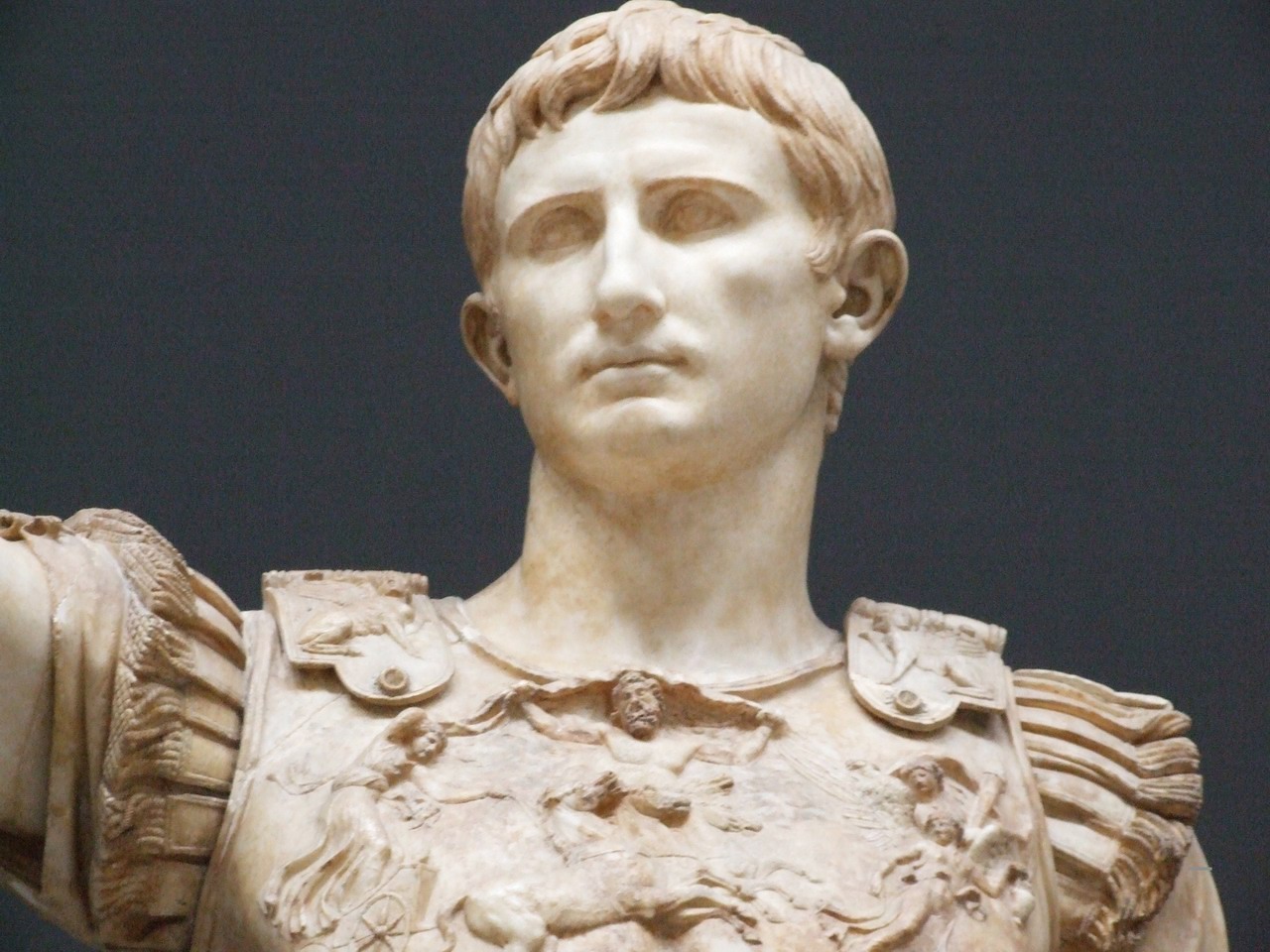
One of the greatest portraits of power ever created, the Augustus of Prima Porta depicts Rome’s first emperor at the very height of his powers. Decked out in the finery of a victorious general, the sculpture was commissioned to commemorate a successful campaign against the powerful Parthian empire, which became a Roman protectorate in 20 BC.
The distinctive cuirass worn by Augustus gives fuller context to the emperor’s triumph: depicted on his breastplate is a scene showing the Parthians returning the Roman eagle standards that they had captured 70 years earlier in a humiliating reverse of the Roman legions. Other vignettes on the cuirass refer to Augustus subduing various other unruly peoples during his reign - Spain, Gaul and Germany amongst them.
The statue captures Augustus in the guise of commander in chief of the Roman army: his right hand is raised in address to the troops, while a consular baton tucked under his left makes clear his authority. Although clearly an idealised portrayal, Augustus is instantly recognisable from his nobly, stony-faced features and characteristic haircut. The emperor is barefoot, in emulation of the gods, and the little figure of Cupid riding a dolphin that accompanies him alludes to his links with the goddess Venus, with whom Augustus claimed affinity via his adopted father Julius Caesar.
The sculpture was discovered in the Villa of Livia on the outskirts of Rome during a dig in 1863. Despite the shining white marble seeming to perfectly represent to us the ideals of classical art, modern research has shown that the statue was almost certainly originally painted. A hypothetical reconstruction of the work’s one-time gaudy polychromy by Vatican experts in 2004 proved highly controversial, and we have little idea of exactly how Augustus would have appeared to contemporaries.
Where to find it: The Braccio Nuovo
We hope you enjoyed our guide to the fabulous ancient sculptures of the Vatican! If you’d like to see these masterpieces for yourself in the company of an expert art-historian, then be sure to check out Through Eternity’s range of small-group Vatican tours and private Vatican itineraries!
